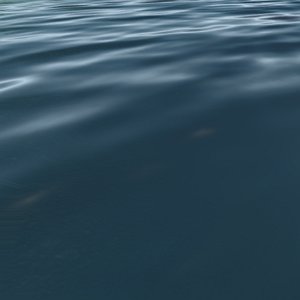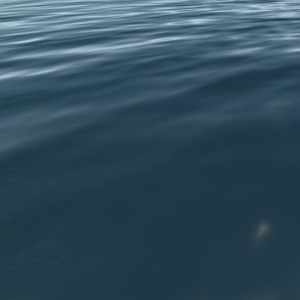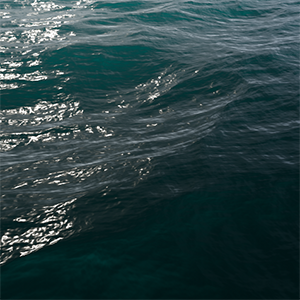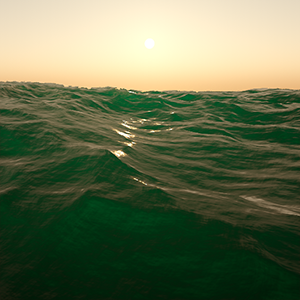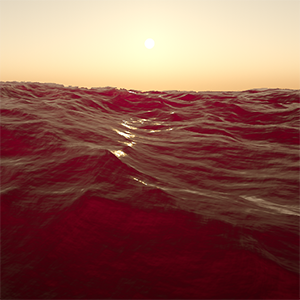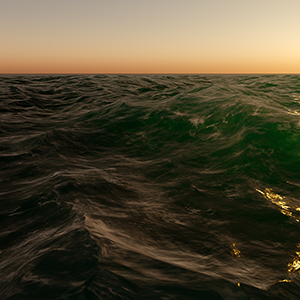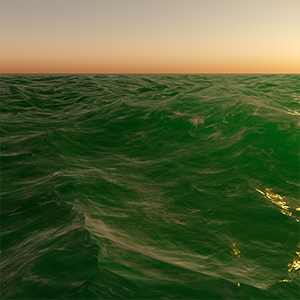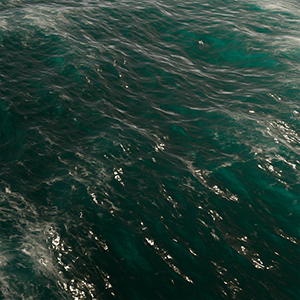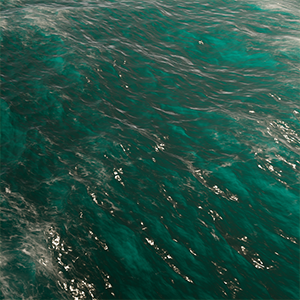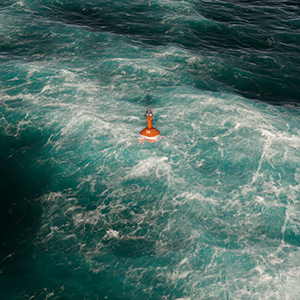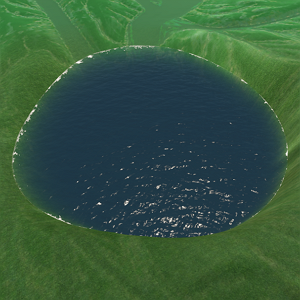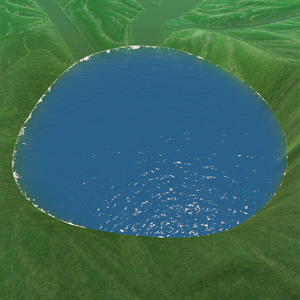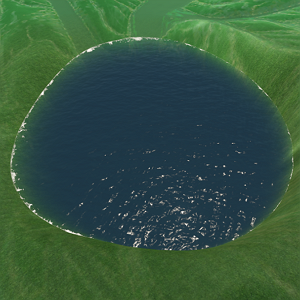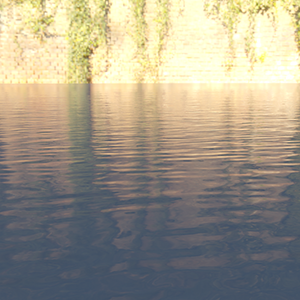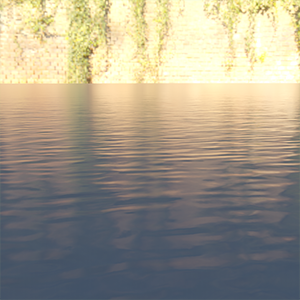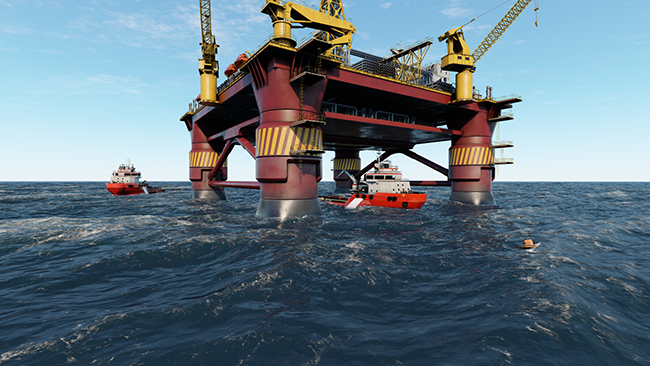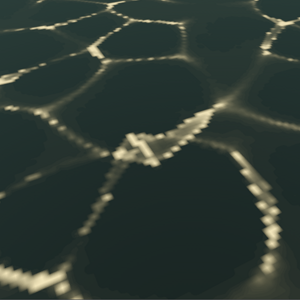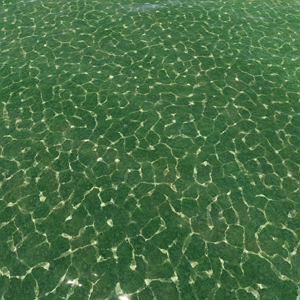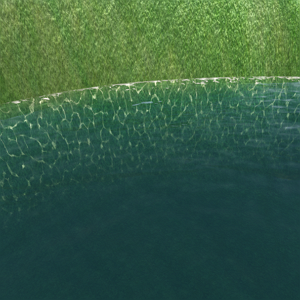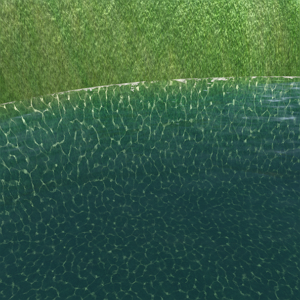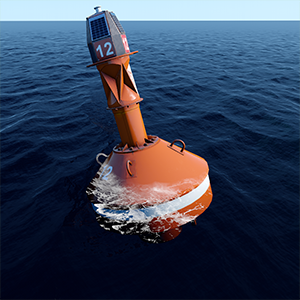water_mesh_base
The water_mesh_base material simulates water and other liquids and is applied to the Water Mesh object.
This article assumes you have prior knowledge of the following topics:

Parameters#
Common#

| FieldSpacer Interaction | Enables the effect of FieldSpacer object on the Water Mesh object. |
|---|---|
| Material Mask | The material bit mask. The decal can be projected onto the water surface only if the material mask of the decal material matches this mask. |
Detail#

Waves for the water_mesh material are created by using the Normal Detail map. The engine performs sampling from the map and creates ripples using several detail layers.
There are two base detail layers (Detail 0 and 1), additional ripples (Detail 2-4) are enabled by toggling on the Additional Details parameter.
| Additional Details |
|
||||||
|---|---|---|---|---|---|---|---|
| Normal Map |
The Normal Detail map stores normal information required to achieve an additional (detail) effect of Normal Mapping. Normal map helps to create ripples (cat's-paw effect) on the water surface. The texture is 2-channeled:
Notice
UNIGINE Engine expects a normal map in DirectX format. If your normal map is in OpenGL format, tick Invert G Channel in the import menu. As a general rule, if the lighting seems weird, try inverting the G Channel and see if it gets better. |
||||||
| Detail UV Transform | This parameter specifies the transformation of the detail map sampling. The first two values are the scale texture coordinates along the X and Y axes. The third and forth specify the wind force and direction for the U and V axes. |
||||||
| Detail Intensity | This parameter sets the intensity of the sample of the detail normal map. | ||||||
Foam#

Subsurface Scattering Parameters#

Underwater Parameters#
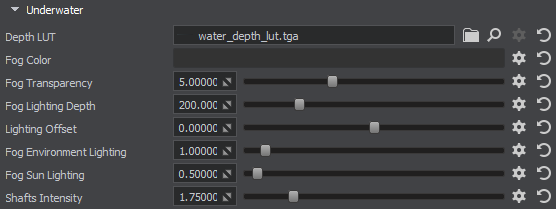
The Underwater parameters adjust the underwater part of the water_mesh_base material.
The final color of underwater is calculated using the following formula:
FinalColor = FogColor * SunLighting^(1/FogSunLighting) + FogColor * EnvLighting^(1/FogEnvLighting)FogColor, FogSunLighting, and FogEnvLighting are specified in the material. The other parameters (Sun and Environment lighting) are calculated according to the sun lighting and environment lighting of the scene. In fact, this formula defines how the sun and the environment lights affect the final underwater color.
| Depth LUT |
LUT texture that shows the color of the bottom. Depending on the depth, the engine chooses the color of the water and multiplies it by the depth LUT texture. This generated LUT shows how deep the photon goes through water until completely scattered. The texture is 4-channeled:
|
||||
|---|---|---|---|---|---|
| Fog Color |
The underwater fog color. The Sun and Environment lighting affect this parameter to create the final underwater fog color.
|
||||
| Fog Transparency |
The transparency of the underwater fog. The higher the value, the more transparent the underwater fog is.
|
||||
| Fog Lighting Depth | The distance from the water surface, in units, up to which the light affects the underwater color. | ||||
| Lighting Offset | Height offset for lighting. | ||||
| Fog Environment Lighting | Degree of impact of the environment lighting on the final underwater color. | ||||
| Fog Sun Lighting | Degree of impact of the sun lighting on the final underwater color. | ||||
| Shafts Intensity | Intensity of the underwater sun shafts. |
Planar Reflection#
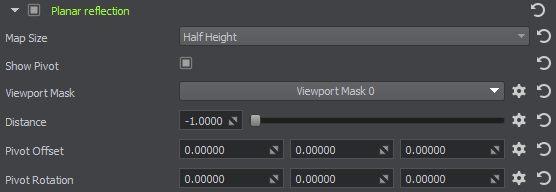
This set of parameters is enabled by toggling on the Planar Reflection option.
| Planar Reflection | If enabled, this option allows using planar reflections on the water surface instead of SSR. |
|---|---|
| Map Size |
The size of the planar reflection map, in pixels: the higher the value, the better the quality is. Available sizes of the map are:
|
| Show Pivot | Displays the pivot plane that shows the direction of reflective surface. By specifying the direction of planar reflection, you can create a reflection surface even if it was exported at an angle. |
| Viewport Mask | Viewport mask of the reflection camera. |
| Distance |
Distance from the reflection camera to the reflected object. In other words, the distance equals the distance from camera to the reflective surface plus the distance from object to reflective surface.
|
| Pivot Offset |
Pivot offset specifies the position of the pivot point. Notice
This parameter can be used to correct reflection if the transformation of reflective surface was changed. |
| Pivot Rotation |
Pivot Rotation specifies the rotation of the reflection pivot point. Notice
This parameter can be used to correct reflection if reflective surface was exported with a tilt angle or was rotated. |
Reflection#

| Roughness |
The environment reflection roughness of the water surface. This parameter helps to tweak reflections on the water surface relative to the environment.
|
||||
|---|---|---|---|---|---|
| Occlusion |
The occlusion factor for environment reflections on parts of the water surface with negative normals. Using this parameter enables simulation of reflection of waves on the water surface removing too bright areas on waves close to the horizon.
|
||||
| Occlusion Slope | Slope of negative normals of the water surface, at which occlusion is performed for wave reflections. |
Caustics#
Caustics is the effect of light rays refraction by the water surface.
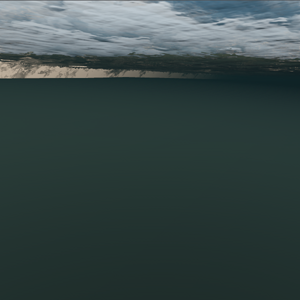
|
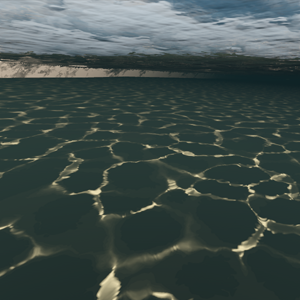
|
|
Caustics state disabled
|
Caustics state enabled
|

| Caustics Distortion |
Removes pixelation and makes caustics look smoother. When smoothing is not required, you can disable this option to gain performance.
|
||||
|---|---|---|---|---|---|
| Caustic Texture |
The 3D Caustic texture determines the pattern of light rays refracted by the water surface. The texture is 1-channeled:
|
||||
| UV Transform |
UV Transform coordinates for the caustic texture.
|
||||
| Distance Fade |
Distance from the water surface downwards, at which light shapes fade, in units.
|
||||
| Animation Speed | Movement speed of the light patterns. | ||||
| Brightness | Brightness of the light shapes. |
Other#

| Waves Radius | Radius of waves on the water surface. | ||||
|---|---|---|---|---|---|
| Refraction Scale |
Scale of the water refraction.
|
||||
| Diffuse Distortion | Distortion of decals projected onto water. | ||||
| Soft Intersection | Soft intersection of water with the shoreline and surfaces of objects. |
Post Processing#
Post processing effects available for the material:
- DOF — enables the depth of field effect.
- Motion blur — enables the motion blur effect.
The information on this page is valid for UNIGINE 2.20 SDK.
